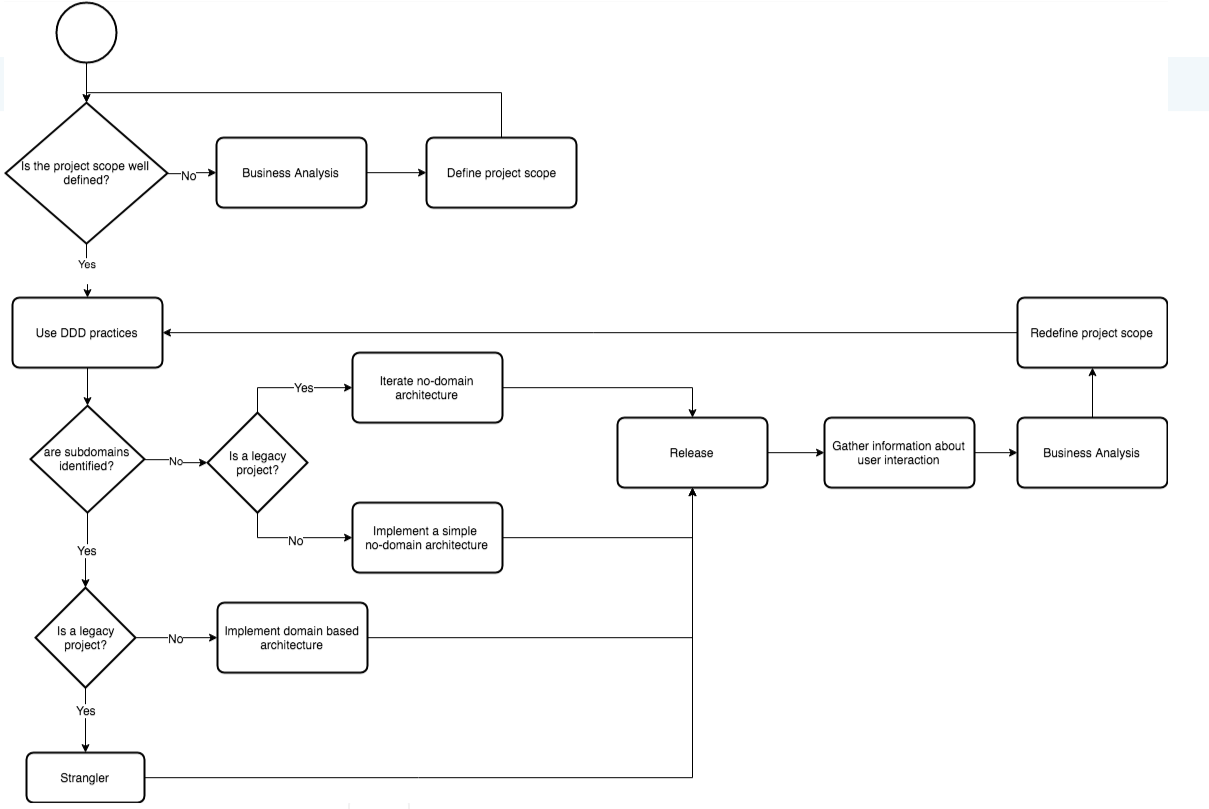As enterprises, we have a tendency to plan long term missions and goals that we want to achieve. Most commonly we have 5-year plans of scaling the organization in two categories: business-centric and technology-centric.
Out of these two, technological changes are difficult to manage partly because of the software development process. The best of practices, approaches, and tools are rigid in their nature of usage.
In the last decade, the software industry has seen an incremental shift from the architectural perspectives to the processes.
Then how can we possibly have a long-term plan when everything changes all the time? Are we sure how we will be writing our JavaScript codes in the next three years? When an architecture or process is implemented, how do we make room for alterations as per the everyday changing technology?
To answer these doubts, the architecture was then designed to make change a part of the plan itself.

Evolutionary Architecture
The basic principle of an evolutionary architecture is change. Small changes when directed into a feedback loop allows a systematic path to learn and develop better software. The process of breaking the extended cycle of development into smaller parts and keeping enough space for improvements make way for better decision making. The architecture is built in a way that any change in the system doesn’t affect the performance of the system. The important characteristics try to preserve it.
The introduction of agile methodologies made a breakthrough in the rigid architectural development cycles of the software industry. It was challenged for its fixed requirements, flow, and phases that were adopted from the construction industry. The pre-planned structures didn’t go well with the modernized technology and business needs and it was time for embracing the change. An ever-changing architecture that aided the vision of enterprises to grow manifolds came into being. The new architecture gave rise to agile software methods and moved in an evolving direction.
Agile promotes better decisions that are driven by expertise than by assumption. This leads to improved architectural decisions along the learning curve. The obvious implication of evolutionary architecture was continuous delivery. With more people getting a hang of it and responding to the change, there’s still a long way to go for the evolvability for architecture to lead.
Before moving onto the path of evolution here are few questions depicted in the flow chart that should be answered well in advance.

Faculty of Evolution
We know that change is on the way, but in what form we can never be sure of. In order to mitigate the difficulty posed by any change, we have let go of a few preconceived notions and learn acceptance.
Conversely, change is interesting in architectural terms. For instance, a highly scalable network of architecture, microservices, emphasizes the design and functionality of the large systems with independent services. The microservices are designed in a way to balance or trade-off the altering aspects with a goal to centralize the architecture.
Microservices deliver benefits like scalability, maintenance, compartmentalization of services and most importantly it adapts to the fundamental changes over time. This takes modularity to a new level and indicates loose coupling and high cohesion. Let’s see how:
Size
Given that changes occur frequently, the size of the architecture is small with multiple dimensions of the design like security, data, auditability, performance, and scalability.
The way the architecture functions is by focusing on providing suggestions that can streamline the business capabilities.
Flexibility
As the business requirements and environments change, the microservices offer increased flexibility for the communication and modification to make the necessary changes. This keeps you floating in the competitive marketplace among other organizations.
Autonomy
The most significant aspect of microservices is the independency it offers for the services to function and thrive autonomously. There are zero dependencies between services and thus the change in a specific service gets easier to integrate.
Modularity and Coupling
In the absence of well-defined boundaries, the architecture can be assumed to lead to chaos. As a series of independent units, microservices are inspired by Domain Driven Design and support some level of modularity.
Experiment
Successful evolutionary architecture is service-based and offers domain partitioning which gives experimentations to follow. The disintegration of these services allow various versions of them to exist and they can be gradually replaced with better functionalities.
How to Achieve Evolutionary Architecture of Microservices?
While the evolutionary architecture sounds all good, it comes with the responsibility of its usage. As decoupling and decentralization become the goal, isolate with care and only where necessary. Also, keep these quick points in check:
- It is wise to start by picking the right stack of tools that can be implemented.
- Apart from a stronghold on the release and load distribution techniques, the frequency of releases should be increased.
- Continuous development cycles should deliver aggressively and radically for the issues to come to the forefront. This will give a direction for the improvements in algorithms that can increase the regularity further.
Conclusion
The three main factors of evolutionary architecture: Experimentation, modularity and hypothesis-driven development yield desirable time-to-market scenarios. The combined efforts of all the factors ensure that the evolutionary steps comply with the architecture and its principles.
Instead of improvising on the rigorous structure each time, the evolutionary architecture furnishes an ever-growing structure based on change.
Subscribe
Related Blogs
Why should you prioritize lean digital in your company?

We are living in an era where the change and innovation rate is just so high. If you want your organization to reach new…
How to measure your open source program’s success?

Along with active participation, it is very important to look after the ROI of open-source projects, programs, and…
Understanding the significance of participating in open-source communities

Do you think contributing to the open source community can be difficult? I don’t think so. Do you have to be employed by a…



